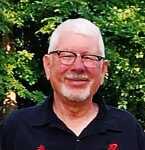- Honoring Troop E: A tribute to Missouri's dedicated highway patrolmen (12/26/24)
- Discover the hidden stories of Poplar Bluff's iconic McGruff the Crime Dog (12/19/24)
- Voices of these 'Singing Mules' were heard around the world (11/15/24)
- Poplar Bluff's women in railroad (11/8/24)
- Battleship Row: Maritime marvels in Poplar Bluff (11/1/24)
- David adopts a museum (10/25/24)
- Walking with Kati (9/12/24)

Pioneer relics are preserved for today
The Poplar Bluff Museum tells many unknown tales of our community. I want to tell you some of those hidden tales found within the museum walls.
What makes museums so interesting is that you can see and touch objects that your ancestors used. It makes history real. Maybe someday common objects that you use in everyday life will be in a museum. The Poplar Bluff Museum is full of artifacts from the 1800s that were handmade for daily use. They remind you how hard it was to meet the basic needs in life.
The largest pioneer artifact is the Walker spinning wheel. It was used to spin yarn or thread from cotton fibers. A woman would spin the wheel with one hand while feeding fibers onto it with the other. The spinning wheel was originally owned by Elizabeth Carol Walker of Arthur Street. She passed it on to Fay Kanell Powell. Mrs. Powell passed it on to Lee Kanell. Mr. Kanell graciously donated to the Poplar Bluff Museum for all to enjoy.
A large mandrel is also on display. This large, conical-shaped object was used to shape metal bands for wagon wheels. Blacksmiths would size the metal bands on this much like a jeweler sized wedding rings. This mandrel was used in the Collins store on what is now W Highway.
Some relics are found in the ground, lost and buried for a century. Their condition makes them looks like fossils. One item that was recovered from the earth was a Halvor-Johnson five-shot revolver. Other relics include a powder horn and a bugle. Each has a fascinating tale which we will never know. They are mounted on barn wood from an old trading post. The square nails holes can still be seen in the wood. On the same board is a collection of barbed wire from the 1800s. There are 80 strands. Who knew there were so many different types?
Most of these pieces of history were donated by family members who wanted to keep their memories alive. Mr. Kernek donated his grandfather’s horseshoe collection. It was made for the 1904 Worlds Fair in St. Louis. There are 26 different styles of horseshoes along with their unique nails. Julia Gardner’s giant cast iron wood burning stove was donated by her granddaughter. Along with cooking for the family, Julia cooked meals for the Butler County jail. Mounted on the stove is an iron pot donated by Mildred Hicks. It was specially designed to fit iron cook stoves. A corn sheller and flour grinder were donated by the Absheer family. Before you could cook a meal, you had to prepare the raw food. The Cooper electrotype printing press was donated by Bob Mann. It used a zinc etching technique. A treadle sewing machine was donated by Nadine Gilliam. It was foot-powered. A wall-mounted coffee grinder was donated by Edward Hendrickson. Many antique women’s shoes and a shoe cobbler stand were donated by Judy Giambelluca. A butter churn, cooking pots, antique dolls, books, locks, keys, women’s hats, marbles and even a Victor Talking Machine with its first-generation records are some of the other many household items on display from the 1800s.
All these pioneer relics from the 1800s can be seen in the Butler County Historical Preservation Society room of the Poplar Bluff Museum.
The Museum is handicap accessible and open free of charge from 1-4 p.m. Sunday at 1010 Main Street. Tell them Mike sent you.
Mike Shane is a veteran, Poplar Bluff resident and board member for the Poplar Bluff Museum.
Posting a comment requires free registration:
- If you already have an account, follow this link to login
- Otherwise, follow this link to register
